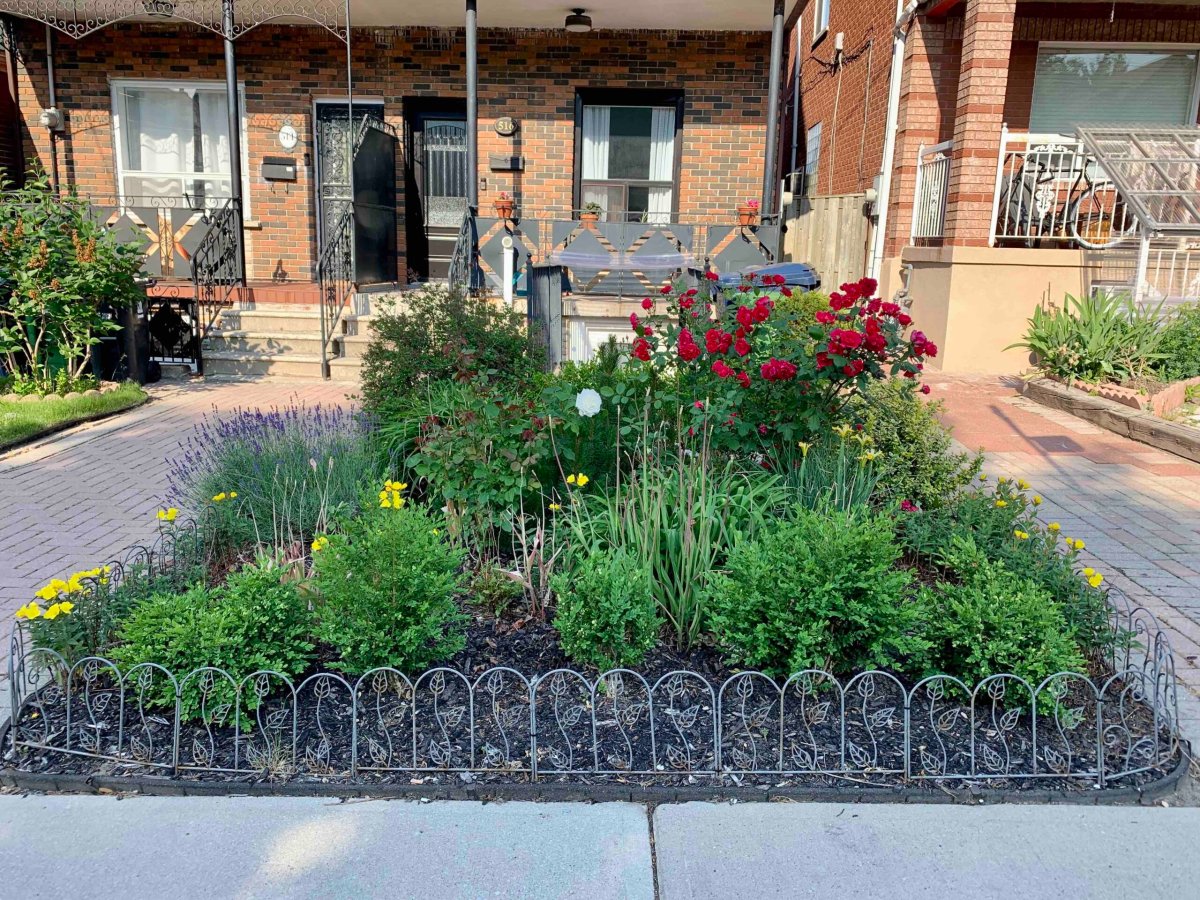

We may earn revenue from the products available on this page and participate in affiliate programs. Learn More ›
There’s nothing quite like a flower garden to bring beauty and joy to an outdoor space. For vibrant blooms that stay on display all season, annual plants are often the home gardener’s go-to. But well-executed perennial garden ideas can showcase a steady parade of colorful, fragrant flowers throughout the growing season, too. And, unlike annuals, perennials come back for several years—no need to repurchase and replant them each spring.
The key to an ever-blooming perennial garden is planting bulbs, flowers, and flowering shrubs with varying bloom times and colors. This takes a bit of planning, but even a beginner gardener can do it. Don’t be daunted by thoughts of, “But I’m not a garden designer!” Designing a perennial flower bed really just means putting together a workable plan for an all-season garden that will thrive in your space and give you years of enjoyment.
RELATED: 20 Perennials to Plant in the Fall for Beautiful Spring Flowers
Understand your plant hardiness zone.
The first step to planning a successful perennial garden is identifying your USDA plant hardiness zone. By understanding your bioregion, you can choose plants for your backyard flower garden that will survive the seasons and come back to bloom each year, saving you money and helping you avoid disappointment. For example, you might love dahlias (who doesn’t?), but if you live in a USDA hardiness zone 7 or lower, they will likely not survive the winter, leaving a hole in your garden for you to fill in the spring (along with a hole in your wallet).
Pay attention to the hardiness zone number marked on a plant’s label. Even if a plant is sold in a garden center in your area, it might not be suited for your region.
Learn about native plant species.
You might also want to research flowering plant species native to your area and include these in your garden plan. Many native plants boast vibrant, beautiful blooms that stay on display longer than their exotic counterparts. Native plants generally are easier to grow and maintain than non-native species, plus they also support local biodiversity and provide a haven for pollinators.
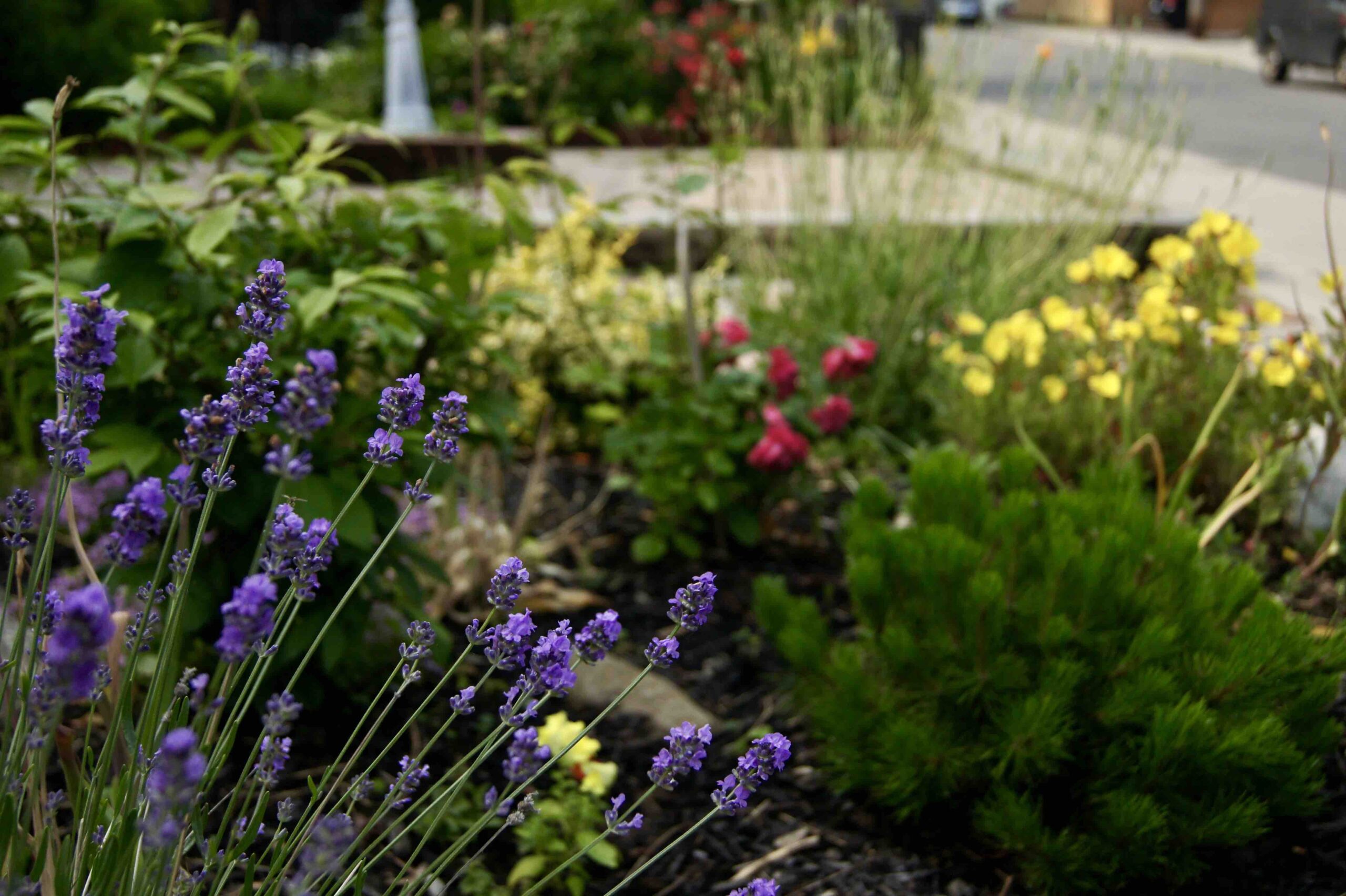
Think about the big picture.
Before you start picking out plants, consider some big-picture questions. What is the purpose of this garden? To attract attention with curb appeal, or to be a quiet backyard retreat? If the plot is in a drive-by area, you might choose big, low-maintenance plants with large flowers and vibrant colors, such as coneflowers, or a flowering shrub like spirea. But if the garden is beside your back deck, where you spend most evenings, you might opt for delicate textures and fragrant blooms, like those seen in English cottage gardens.
Also consider the actual “big picture”— look at your garden site from every angle. The vantage point from which you and guests will see the garden will have a huge effect on how to structure it. For example, a front yard perennial garden that butts up against a house has a clear “back” and “front.” One-sided gardens like this look best with the tallest plants at the back and a steady grade down to shorter plants at the sides and front. Thinking about how and from where you will view your garden will help you to picture the basic shapes and rhythms that will be most pleasing to the eye.

Get to know your garden space.
Now’s the time to get to know your garden site’s conditions. What is growing in the area already? Take note of existing plants that are thriving, as you may want to keep them in your design. By being observant and taking note of the big three garden concerns—sun, water, and soil—you can get to know your garden site and determine how to get it ready for your new perennial garden. Paying attention to these conditions can help when choosing plants.
Study the light.
Pay particular attention to the light patterns of the area. How many hours of daylight does the garden bed get? Are there some shady corners? Many flowering perennials, such as yarrow, need about 6 hours of sun daily, but others can still thrive in partial sun. Also, remember to note how light changes with the seasons, since the sun and its shadows move.

Check water drainage.
Watch what happens to the space when it rains or you irrigate.Take note of your observations and use them to inform decisions about what to plant and where. Are there any low points where water pools or spots where the soil doesn’t quite dry out in the sun? Some plants, like lobelia, love a moist environment, while others, like bougainvillea, can develop root rot in wet soil. Are there any especially hot and dry areas? That may be a good spot for evening primrose, a drought-tolerant and sun-loving beauty.
Evaluate the soil.
The foundation of a garden full of healthy blooms is healthy soil. You can go high-tech with soil testers or moisture meters, or you can do a quick and basic assessment of your soil by holding it in your hand. How does it feel when you rub it between your fingers? Clay-like? Sandy? Gritty? If you squeeze it, does it retain its shape, like clay, or does it run through your fingers, like sand?
For sandy soil and clay silt, the fix is the same: amend with organic matter, such as compost, which will improve the water-holding capacity of sandy soil, lighten the texture of clay soil, and add nutrients to the garden.
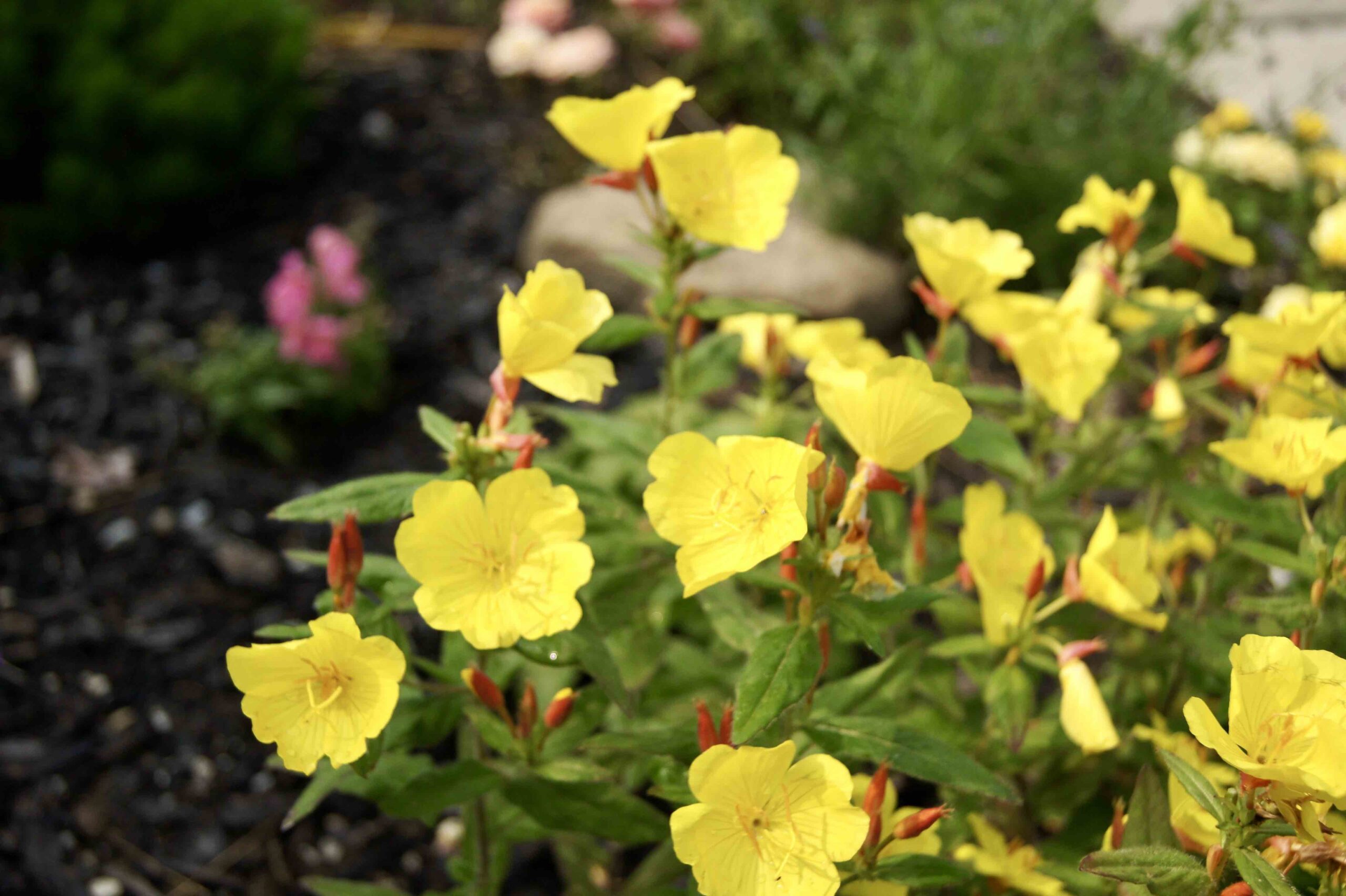
Research and list favorite perennial plants.
Here comes the fun part! Do some research and get to know perennials that grow in your hardiness zone. Consult gardening books, websites, and magazines. Discover your own gardening style by noticing what draws you. Take pictures of gardens in your neighborhood that inspire you and visit local nurseries to get perennial garden ideas and see plants up close. Write down the names of your favorites, along with information from the plant label:
- Plant height and width at maturity
- Bloom time
- Light needs (partial sun, full sun)
- Color
As you compile your list, keep your garden’s conditions in mind. Try to choose plants that will thrive in their new home. For example, if half of your garden bed gets partial sun (5 hours or less), then half of the plants you select should be those suited for partial sun.
RELATED: 12 Perennial Vegetables to Plant for Years of Fresh Produce
Categorize your choices.
Organize your plant choices by categorizing them. First, list them by bloom time:
- Early season (e.g., tulips, peonies, poppies)
- Mid season (e.g., coneflowers, phlox, dianthus)
- Late season (e.g., hostas, black-eyed Susans, Russian sage)
Your goal for an ever-blooming perennial garden is to have a third each of early-blooming plants, mid-season bloomers, and late-season color. Within each of those categories, split the list into categories based on height (tall, medium, short). Finally, group your plants in each list by color.
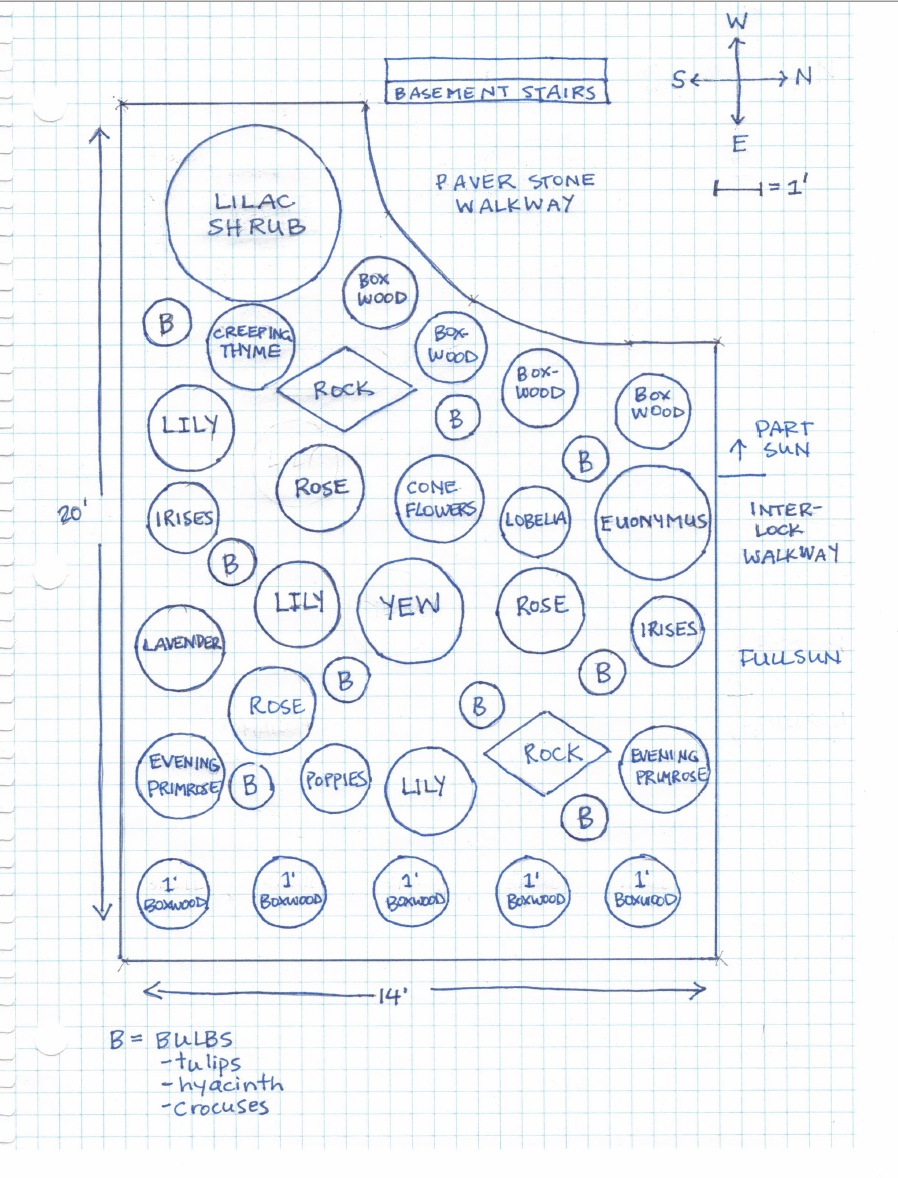
Measure and map out your garden.
Now that your lists of favorites are in hand, you may want to buy them all and start planting. Resist the urge! Measuring and mapping out your garden before buying the plants is a vital step in creating a successful perennial garden. Planning ahead by making a flower bed layout will eliminate or minimize the need to relocate plants once they’re established.
Mapping out your garden area may sound tedious or complicated, but it doesn’t have to be. Follow these simple steps:
- Measure garden site (length, width, and depth).
- Draw the dimensions on paper (gridded paper is best).
- Indicate directions of north and south on the map and areas of full and partial sun.
- Include fixed items like trees or buildings or existing plants you want to keep.
Once you have your flower garden planner ready, be sure to make a few copies as backups. Now you’re ready to start plotting the individual plants. A simple way to do this is to draw circles proportionate to the size of the proposed plant.
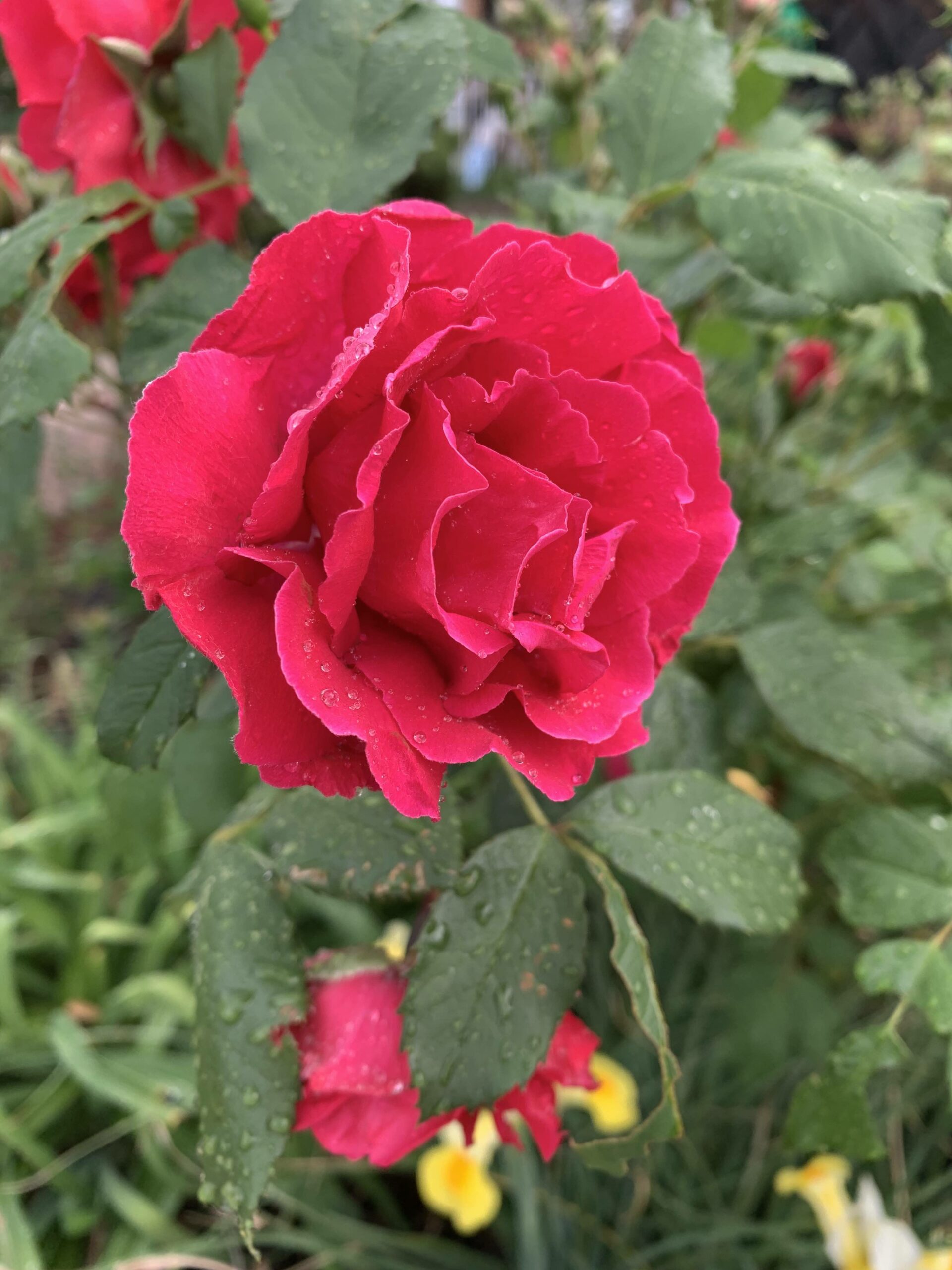
Place plants within the plan.
When choosing where to place the plants you’ve selected on the map, keep these simple design principles in mind:
- Place tall plants behind shorter ones.
- Group plants with different bloom times together.
- Do not overcrowd your garden; consider the mature size of plants.
- Vary plant texture and foliage as a backdrop for the blooms.
If you are having difficulty envisioning your garden and putting a plan together, search for low-maintenance flower bed ideas online for inspiration.
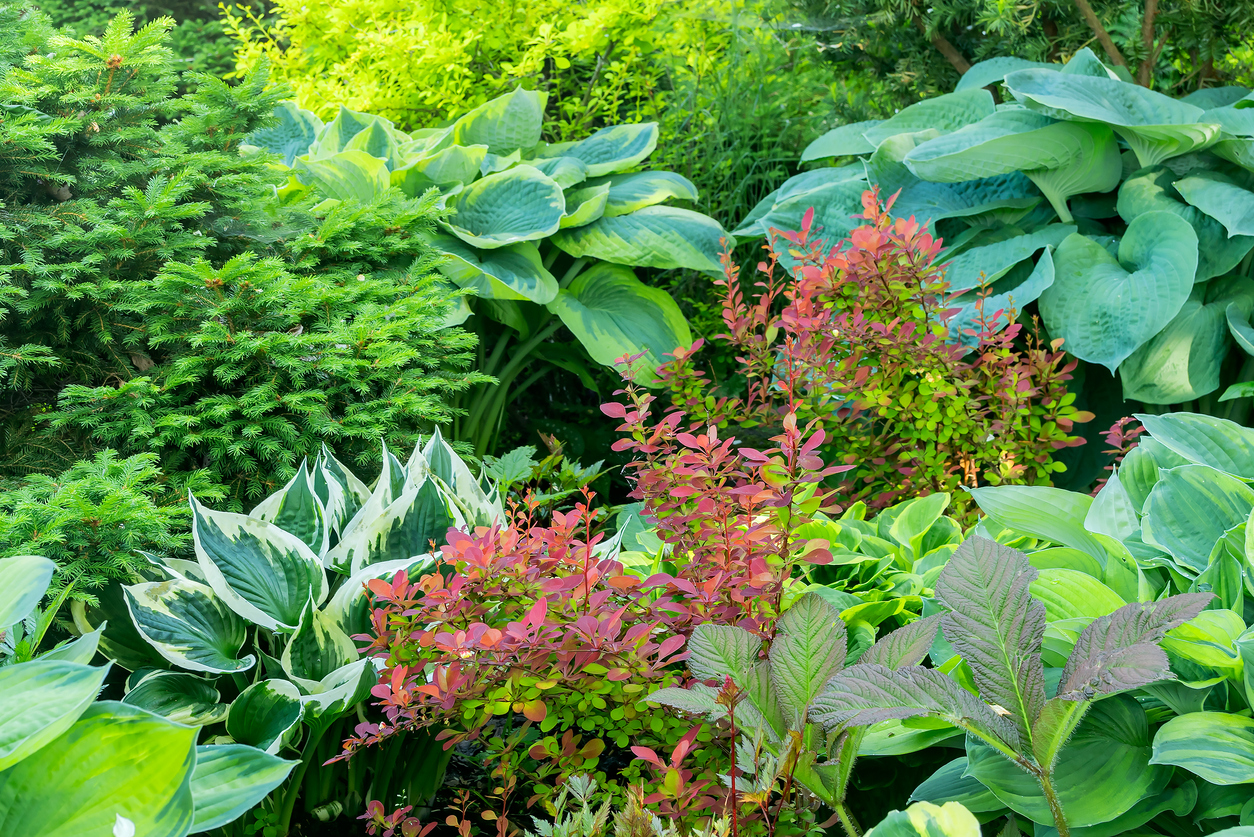
Have fun with color—and think beyond blooms.
Successful perennial garden designs will pull the viewer’s eye into the garden and through it. One way to do this is by using color rhythm—planting repeated colors throughout the garden so that the viewer follows the trail of color through the space.
Warm hues like red and orange move forward visually, while cool colors such as blues and violets recede, which you can use to create visual interest. You can also use complementary colors (colors opposite each other on the color wheel) to create excitement and contrast, such as pairing yellow globe flowers or evening primrose with the rich blue-purple of lavender.
When we think of a plant’s color, the first thing that comes to mind may be its bloom. But color doesn’t just come from flowers. Foliage, stems, and even berries can provide stunning pops of color in the perennial garden. Also, consider scents from plants close to patios, or placing perennial herbs near your kitchen door.
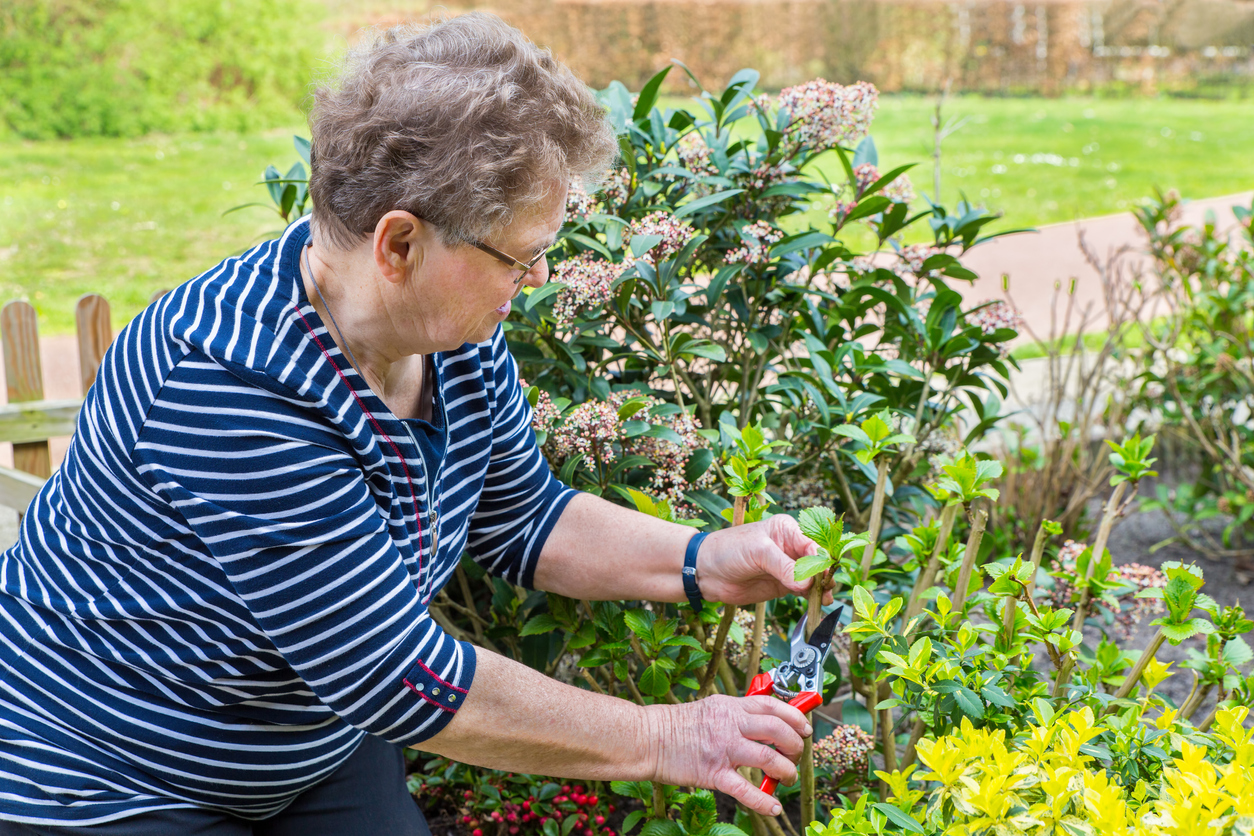
Keep your garden healthy to maximize bloom times.
Once your plants are in the ground, your work isn’t over. Newly planted perennials will need ample watering to develop strong and healthy root systems. A deep soak once or twice a week is better than a light daily sprinkling.
Regular deadheading of spent blossoms will encourage longer bloom times and keep your plants looking pretty. Keep an eye on the health of your plants and be alert for signs of stress or pests. Healthy, happy plants bloom longer, while stressed plants tend to bloom early and fade quickly.
A light yearly treatment of fertilizer or a yearly application of compost should provide adequate nutrition for your garden.
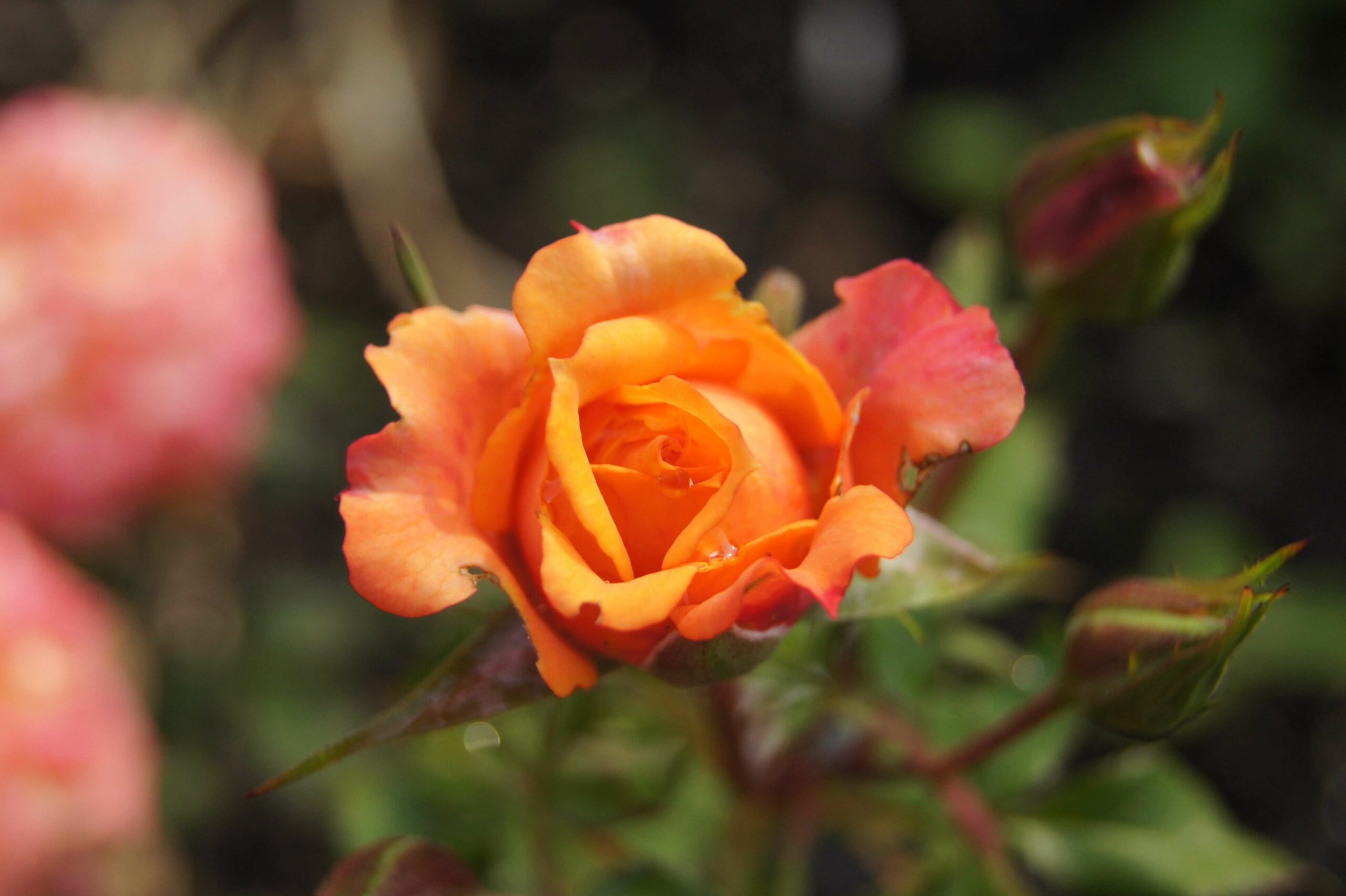
Be patient—with your garden and yourself.
Perennial gardening is about playing the long game. Some perennial plants don’t bloom the first year they are planted, or even the second year. Don’t be discouraged if you don’t see much happening above ground at first. Your plants are hard at work underground, and with time your patience will pay off.
Be patient with yourself as well. Do your best to place plants where they will thrive and look nice, but don’t agonize over your design decisions. If next year you see that a plant is struggling or a design choice you made is not working, there is nothing wrong with moving things around or trying something new. Enjoy the journey, and don’t be afraid of making mistakes.
RELATED: How to Build a Rain Garden—and Why You Should
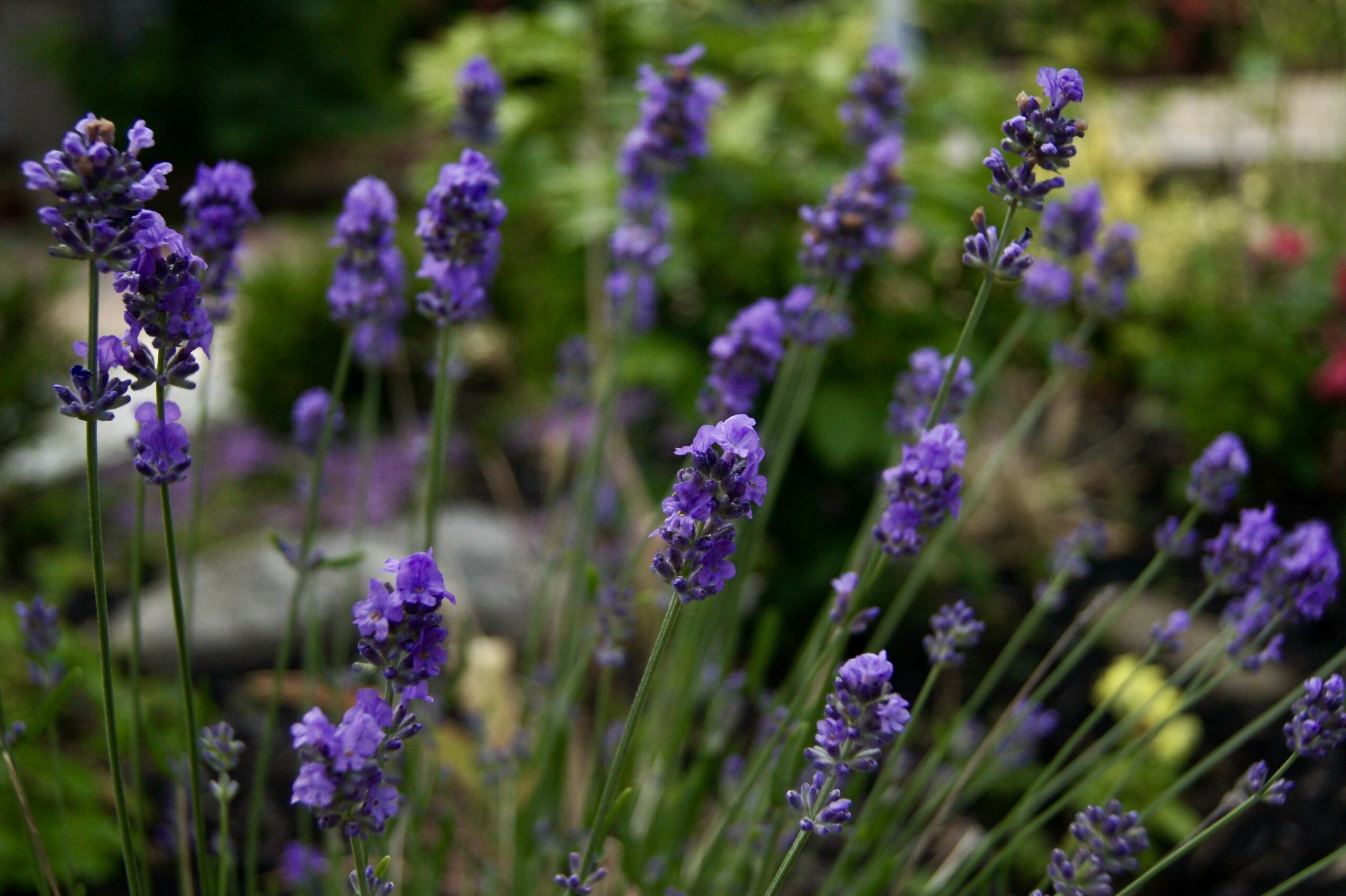
FAQ About Perennial Garden Design
Now you know how to design an ever-blooming perennial garden, but you may still have some questions. Here are answers to some frequently asked questions about perennials.
Q. When is the best time of year to plant perennials?
Early spring or late summer/early fall are the best times of year to plant perennials. Planting in early spring, but after the danger of frost is past, can give most perennials a good start. Early fall gives the plant time to establish and expand its root system before going dormant for winter. By the time summer comes, the plant will be well established and able to withstand the heat. Buying perennials in the fall can also be more affordable, as you can usually find end-of-season sales at garden centers.
Q. Are perennials generally low maintenance?
Perennials can be incredibly low maintenance as long as they are planted in places where they can thrive. Perennial shrubs require some periodic pruning, and some perennial plants may need to be divided every few years if they become overgrown.
Q. What is the longest blooming perennial?
Bloom times for perennial plants vary depending on the USDA plant hardiness zone in which they are planted. Perennial salvia is well known as a very long bloomer, with blooms lasting from spring through fall with full sun and regular deadheading.
Q. How many years do perennials last?
Perennials are plants that can survive in the ground for at least 2 years. The total lifespan of perennials varies greatly between plants, with some lasting as little as 3 years, and some as long as 15 years.
Q. Do perennials need a lot of watering?
Perennials need regular watering in the first 2 years of life. A deep soak once a week is much better than daily sprinkling. Once a plant is matured, it will generally only need extra watering in times of high heat or drought.
